- Home
- Chainsaw Maintenance
- Chainsaw Tips for Beginners
Chainsaw Tips For Beginners
This post may contain affiliate links so I earn a commission.
Are you looking for chainsaw tips for beginners?
Your search ends here - we have all the advice you need to read before you get started.
Each year, more than 3 million new chainsaws are sold in the United States alone.
Of those, many are sold to beginners - and of those, combined with millions of older chainsaws in circulation, contribute to the more than 28,000 chainsaw-related injuries and fatalities each year.
How do you avoid hurting yourself when using a chainsaw?
Follow these chainsaw tips for beginners so that you know how to safely and effectively use your tools.
12 Chainsaw Tips For Beginners
Before you head out into the woods, check out these top chainsaw tips for beginners - you’ll be glad you did!
1. Don’t Overdo It
Know your limitations always but especially when working with potentially dangerous tools like chainsaws.
It’s important to be aware of your capabilities.
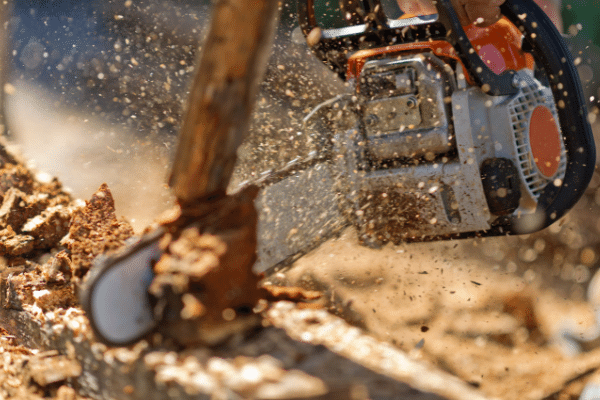
If you aren’t sure exactly how your saw works or how to safely operate it, take a class or enlist the help of a more experienced operator to show you the ropes.
If you have any doubts about your ability to handle a chainsaw, you don’t have any business running one.
2. Get The Right Chainsaw For The Job
Be sure that you have the right chainsaw for what you are trying to do.
While a smaller chainsaw will be easier for you to handle, it does limit the size of the tree you will be able to cut.
Take into consideration the chain type, length of bar, and size of the chainsaw when you’re deciding on the right saw for your needs.
3. Make Sure Your Saw Is Properly Maintained
Before you start working with your chainsaw, take a few moments to make sure everything is in good working order.
Are your parts properly lubricated?
Does the chain have the right tension?
Are the teeth sharpened?
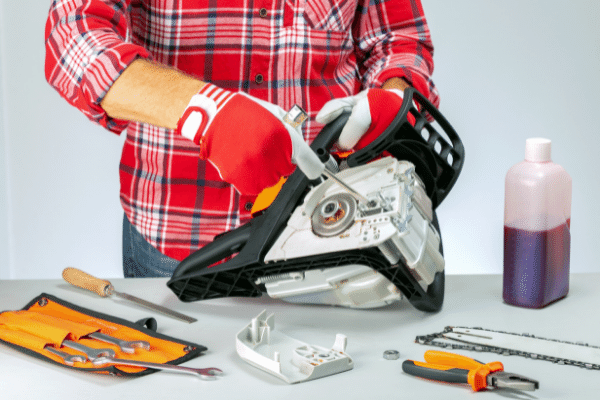
When you’re new to running a chainsaw, it’s a good idea to have these items written down in a checklist that you can run through quickly before you start working.
Over time, these items will become firmly ensconced in your brain so you don’t have to think about them as you run through them automatically.
4. Examine The Working Environment
Never, under any circumstances, start using a chainsaw without thoroughly examining the working environment.
You need to make sure the environment is clear of any people or obstacles.
Double and triple-check that nothing can fall on you as you work (such as debris or “widow-makers'” from the trees nearby).
5. Making The First Cuts
When you are ready to start working, make sure you are holding the saw firmly with both hands, keeping it close to your body.
Don’t cut in poor weather conditions and work slowly and deliberately.
Now is not the time to rush!
6. Wear Your PPE - Chainsaw Tips For Beginners
PPE, or personal protective equipment, is essential when running a chainsaw.
No matter how much experience you have, accidents happen - but wearing the right equipment can mean the difference between life and death.
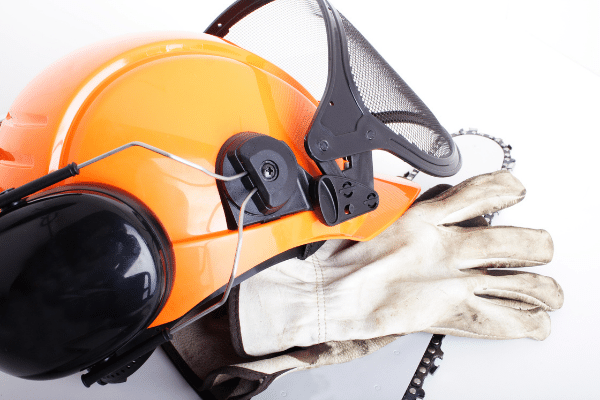
Some good things to wear include:
- A protective helmet with hearing protection, a visor, neck guard, and a sun peak
- Protecting clothing like chainsaw chaps or cutting pants
- Steel-toed boots
- Safety glasses or goggles
- Earmuffs
7. Work Below Shoulder Level
When using your chainsaw, avoid raising it above the level of your shoulders.
This will make it harder for you to see what you are cutting and will increase the risk of kickback and injury.
8. Avoid Ladder Use
Sometimes you might have to cut branches that are beyond your reach.
If you’re new to using a chainsaw, don’t attempt these.
You’ll have to use a ladder and when you don’t have a lot of experience, the two are far from a match made in heaven.
Not only is the risk of a kickback higher, but the likelihood of you falling should the saw kickback is also increased.
Instead, entrust this task to the professionals - and wait until you have a bit more experience to attempt it.
9. Hold The Saw Properly - Chainsaw Tips For Beginners
When you run your chainsaw, always do so with both hands.
Avoid adjusting your changing position while the engine is running.
10. Don’t Drop Start Your Chainsaw
Drop starting is considered a more advanced chainsaw technique - and it’s one that really should be avoided by everyone.
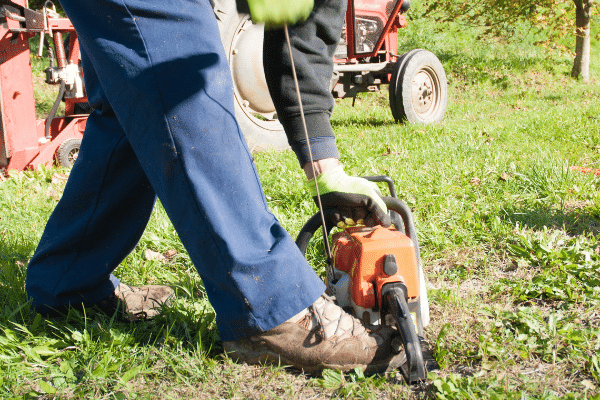
That’s doubly true for beginners.
Drop starting can dramatically increase your risk of a serious injury.
Instead, rely on cold or warm start positions only to get your saw going.
11. Watch Out For Kickbacks
Kickbacks can happen to anyone but they often catch beginners off guard.
Many modern saws come with protective guards that will prevent injuries from kickbacks, but that’s not always going to be the case.
Be aware of the potential for kickbacks at all times.
To reduce the likelihood of a kickback, hold the chainsaw with both of your hands and do your best to ensure that the tip does not come into contact with any objects.
Be careful when cutting light materials, like twigs.
12. Think Before Cutting
One of the best tips you can follow when using a chainsaw - either for the first or five hundredth time - is to think before you cut.
Don’t enter into a task blindly.
Instead, put some thought into how and where you should cut.
If you feel tired at all while you’re cutting, stop and take a break.
That way, you don’t have to worry about making stupid (and avoidable) mistakes.
Chainsaw Tips For Beginners - Overall
Learning how to use a chainsaw can be intimidating, but it doesn't have to be.
Follow these tips as you're learning and soon enough, you'll find yourself feeling comfortable with the process.
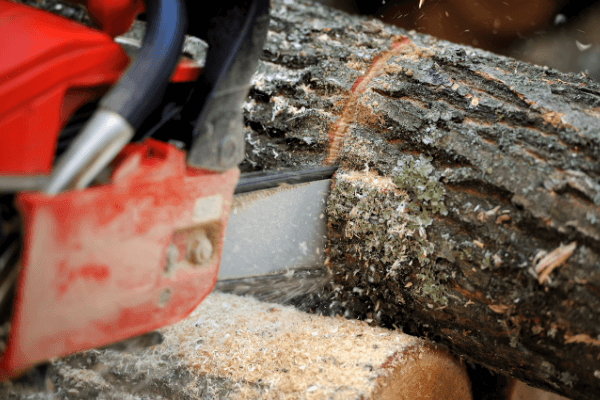
Before using any power tool, read all safety
instructions carefully and follow them closely.
Make sure that if someone else is teaching or showing you how to do something on the saw that they also know about safety precautions - don't take any chances.
And the most important tip?
Pay attention.
Now is not the time to allow your mind to wander.
When you’re new to using a chainsaw, it’s important that you watch for hazards and kickbacks at all times.
The chainsaw is a great tool for clearing out brush and trees, but it's important to learn how to use them before you start.
These tips will help get you started on the right foot with chainsaw safety and operation.

About the Author
Obsessed with firewood, Nick is behind over 350+ of Firewood For Life's articles, as well as countless reviews, guides and YouTube videos to help readers like you reduce heating costs and create the perfect fire.


